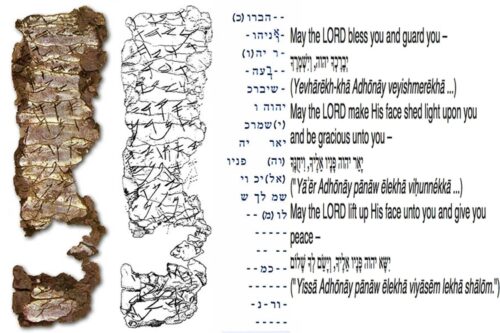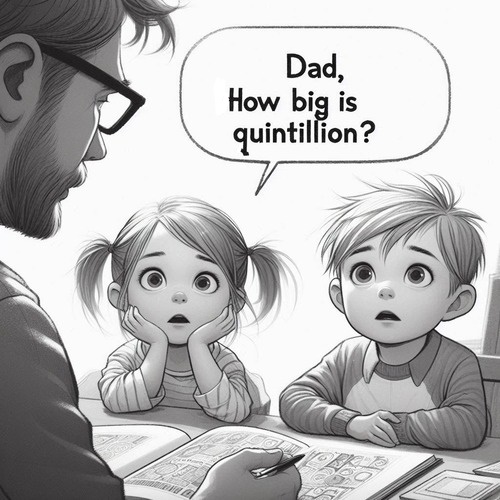The Ketef Hinnom Scrolls: An Accidental Yet Phenomenal Find
SMALLER THAN OUR PALM, OLDER THAN THE DEAD SEA SCROLLS
In 1979, a bored 13-year-old volunteer at an archaeological dig in Jerusalem made a discovery that would rewrite our understanding of biblical history. What started as an accident in a seemingly worthless tomb became one of the most significant archaeological finds of the 20th century.
THE DISCOVERY THAT ALMOST DIDN’T HAPPEN
The Valley of Hinnom, just outside Jerusalem’s Old City, wasn’t exactly a hotspot for archaeological excitement. Gabriel Barkay’s excavation team had been working the site for months, uncovering what appeared to be thoroughly looted ancient tombs. One chamber in particular—dubbed Chamber 25—seemed completely barren. The ceiling had collapsed centuries ago, and Ottoman soldiers had even used it to store rifles. Most archaeologists would have moved on.
But a 13-year-old volunteer wasn’t ready to give up. While the rest of the team focused on more promising areas, the teenager kept digging through the debris in the “sterile” tomb. Then, buried beneath 60 centimetres of collapsed stone and dirt, came the breakthrough: over 1,000 ancient objects, including pottery, jewellery, and arrowheads.
Among the artefacts were two tiny, tarnished pieces of silver that didn’t look like much. They were so small they could easily fit in our palms—in fact, they were smaller than most modern coins. The team almost missed their significance entirely.
YEARS OF PAINSTAKING WORK REVEAL THE IMPOSSIBLE
What happened next required extraordinary patience. The silver pieces were actually rolled-up scrolls: they were so delicate and corroded that unrolling them seemed impossible. Barkay’s team spent three years developing new techniques to carefully separate the layers without destroying the ancient metal.
When they finally succeeded, they couldn’t believe what they saw: Hebrew text, written in the ancient Paleo-Hebrew script. The larger scroll measured just 97 by 29 millimetres when unrolled—about the size of a business card. The smaller one was even tinier at 39 by 11 millimetres. But size doesn’t tell the whole story.
WHY THESE TINY SCROLLS CHANGED EVERYTHING
The text inscribed on these silver amulets contained portions of what we know today as the Priestly Blessing from Numbers 6:24-26: “The Lord bless you and keep you; the Lord make his face shine upon you…” The implications were staggering.
- They’re older than the Dead Sea Scrolls. Radiocarbon dating and archaeological context placed these scrolls between 650-587 BC—the final years before the Babylonian exile destroyed Jerusalem. That makes them roughly 500 years older than the famous Dead Sea Scrolls and the oldest surviving texts from the Hebrew Bible ever discovered.
- They prove biblical texts existed earlier than sceptics claimed. For decades, some scholars argued much of the Hebrew Bible was compiled centuries later than traditionally believed. The Ketef Hinnom scrolls provide physical proof that at least portions of biblical text existed in the First Temple period, exactly when traditional dating suggested. This makes them older than any other biblical text, challenging theories such as the Documentary Hypothesis that suggest later composition of the Hebrew Bible.
- They reveal how ancient faith worked. These weren’t scrolls meant for reading—the text was too small to see when worn. Instead, they were protective amulets, rolled up and worn around the neck or wrist. They mention Yahweh as a “Rebuker of Evil,” revealing how ancient Israelites integrated sacred texts into daily life. Found in a tomb from the era of King Josiah and the prophet Jeremiah, they align with biblical accounts of a religious reawakening in Judah (2 Chronicles 34). Their text closely matches the Masoretic Text used today, confirming the remarkable stability of biblical transmission over millennia.
THE BROADER REVOLUTION
The discovery sent shockwaves through biblical scholarship and archaeology. Here was tangible evidence that contradicted theories about late Bible composition. The scrolls showed not only did these texts exist in the 7th century BC, they were also considered sacred enough to be crafted into protective amulets.
The find also demonstrated remarkable textual stability. The words on these ancient amulets match the biblical text we know today almost letter for letter, suggesting an extraordinary level of care in preserving sacred writings across centuries.
WHAT WE’RE STILL LEARNING
Nearly 45 years after their discovery, the Ketef Hinnom scrolls continue to yield insights. Advanced imaging techniques have revealed additional text previously invisible to researchers. Each new analysis deepens our understanding of ancient Hebrew, religious practices, and the development of biblical literature.
The scrolls raise tantalising questions: Were these copied from existing written scriptures, or do they preserve even older oral traditions? How many other biblical texts existed in this period but were lost to time? What other treasures might be waiting in Jerusalem’s ancient layers?
THE KETEF HINNOM SCROLLS: WHY THEY MATTER TODAY
The Ketef Hinnom scrolls remind us archaeology isn’t just about dusty artefacts—it’s about connecting with real people who lived, believed, and hoped thousands of years ago. The tiny silver scrolls prove that sometimes the most significant finds come in the smallest packages. They challenge us to reconsider what we think we know about the ancient world and remind us major discoveries can happen anywhere—even in the debris of a forgotten tomb that everyone else had written off.
The next time we hear about archaeological “accidents,” remember the Ketef Hinnom scrolls. Sometimes the most phenomenal finds are waiting in the most unexpected places—just beneath the surface of what we think we already know.
THE KETEF HINNOM SCROLLS: RELATED FAQS
What do Reformed scholars say about the Ketef Hinnom Scrolls’ significance? Reformed scholars have embraced the scrolls as powerful evidence supporting traditional biblical dating and reliability of Scripture. Scholars like Douglas Stuart and Walter Kaiser point to them as vindication of conservative positions on the early compilation of biblical texts. They argue the scrolls demonstrate God’s Word was being carefully preserved and transmitted even in ancient times, supporting the doctrine of Scripture’s providential preservation. Many see them as archaeological confirmation of what Reformed theology has long maintained about biblical antiquity and textual reliability.
- Could the scrolls have been forgeries or later additions to the tomb? The archaeological context makes forgery virtually impossible. The scrolls were found sealed beneath collapsed ceiling stones and debris layers that archaeologists could definitively date to the 6th century BC. The corrosion patterns, metal composition, and patina are consistent with genuine ancient silver. Additionally, the Paleo-Hebrew script and spelling conventions match exactly what we’d expect from the pre-exilic period. Modern forgers in 1979 would have lacked both the knowledge and technology to create such convincing ancient artefacts.
- Why were these particular verses chosen for the amulets? The Priestly Blessing was likely chosen because it invokes God’s protection and favour—perfect for a protective amulet. Ancient Near Eastern cultures commonly used divine names and blessings for magical protection, and these verses contain multiple references to Yahweh’s protective care. The blessing’s liturgical importance in temple worship may have made it especially powerful in popular religion. Some scholars suggest these specific verses were already recognised as particularly sacred or effective for spiritual protection in 7th-century Judah.
How do the scrolls compare to other ancient amulets from the region? While protective amulets were common throughout the ancient Near East, the Ketef Hinnom scrolls are unique: they contain actual biblical text rather than magical formulae or divine names alone. Most contemporary amulets from Egypt, Mesopotamia, and Canaan featured incantations, symbols, or brief divine epithets. The scrolls represent a distinctly Israelite practice of using extended scriptural passages for protection. This suggests a more text-centred religious culture existed in ancient Judah than previously understood.
- What did advanced techniques reveal that wasn’t initially visible? Researchers have used multispectral imaging, 3D scanning, and reflectance transformation imaging (RTI) to reveal previously hidden text on the corroded silver. The techniques capture images at different wavelengths of light, revealing details invisible to the naked eye. Computer enhancement has helped distinguish between corrosion patterns and intentional markings. Some letters that appeared completely obscured in initial photographs have become readable through these digital archaeology methods, adding to our understanding of the complete inscriptions.
- Are there any theological controversies surrounding the scrolls’ interpretation? Some debate centres on whether the scrolls represent “popular religion” versus “official temple Judaism.” Critical scholars suggest they show how ordinary people adapted official religious texts for magical purposes, potentially contrary to orthodox practice. Others question whether wearing biblical text as amulets aligns with later Jewish prohibitions against using Scripture for magical purposes. However, most scholars see them as evidence of genuine faith expression rather than syncretistic magic, representing how sacred text functioned in daily religious life.
What other discoveries might be waiting in Jerusalem’s archaeological layers? The Ketef Hinnom discovery suggests Jerusalem’s ancient cemeteries and residential areas may contain far more preserved organic and metal materials than previously thought. Ongoing excavations in the City of David, the Western Wall tunnels, and other areas continue to yield surprising finds. Climate conditions in Jerusalem’s limestone caves can preserve materials for millennia, and many areas remain unexplored due to modern construction and political sensitivities. Archaeologists believe significant biblical-period discoveries are still possible, especially in areas that haven’t been thoroughly excavated.
THE KETEF HINNOM SCROLLS: OUR RELATED POSTS
Editor's Pick

The Throne-Room Vision: Who Did Isaiah See?
The scene is unforgettable: Isaiah stands in the temple, and suddenly the veil between heaven and earth tears open. He [...]

The Angel of the Lord: Can We Be Certain It Was Christ All Along?
Throughout the Old Testament, a mysterious figure appears: the Angel of the LORD. He speaks as God, bears God’s name, [...]
SUPPORT US:
Feel the Holy Spirit's gentle nudge to partner with us?
Donate Online:
Account Name: TRUTHS TO DIE FOR FOUNDATION
Account Number: 10243565459
Bank IFSC: IDFB0043391
Bank Name: IDFC FIRST BANK






